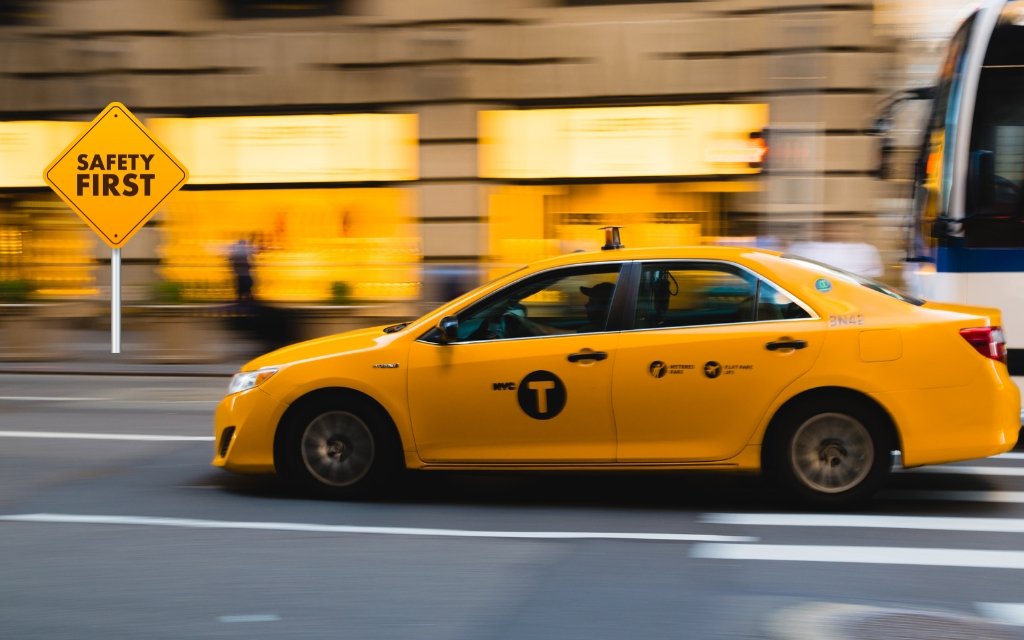Learn about New Jersey taxi law on exiting vehicle out into street, avoid fines, and stay safe with these essential tips.
Perhaps you are in the taxi or Uber, ready to hop out after that long ride and then suddenly wear a look of hesitation on your face, contemplating whether it will be safe to get out. Yeah, I have, and it’s one of these situations that feel a bit confusing. After all, we’re so used to stepping out of cars without giving much thought to the legal consequences or potential dangers.
But did you know that in New Jersey there are very specific laws providing how and when you can exit into the street from a taxi or vehicle?
Yep, that’s right! If you aren’t careful when you step out of a taxi, you might just find yourself in not only danger but on the wrong side of the law. In this article, I’m going to take you through New Jersey taxi law on exiting a vehicle out into the street: explain the legal ins and outs, and give you some tips on how to stay safe and avoid unnecessary fines.
So, buckle up-or rather unbuckle, since we’re talking about getting out of the car-and let’s get to it!
Table of Contents
Why Exiting a Vehicle Matters More Than You Think
Before the legal heavy lifting, let me set the stage with a quick story. Several months ago, I was in Hoboken, New Jersey, catching a ride home after a late dinner with a friend. The taxi pulled up to the curb, and without thinking much, I opened the door- right into the path of a cyclist. Thankfully, the cyclist swerved just in time, but it was a close call.
It made me understand that exiting a vehicle, like in the busy city parts of New Jersey, was more than a casual step; it’s something that could have serious consequences if done incorrectly.
This led to doing further research on New Jersey laws related to the exit from vehicles, and what was found was an eye-opener.
The Law: New Jersey’s Rules on Leaving a Vehicle
So, what does it say in that law? Essentially, New Jersey Statutes have specific rules that cover how one departs a vehicle, particularly if one steps out into traffic. Substantively, the law is concerned with averting dangerous scenarios where a person opens a vehicle door into or obstructs oncoming traffic-flow, whether it be cars, bicycles, even pedestrians.
Here’s the key takeaway: it is a New Jersey law that no person shall open the door of a vehicle on the side available to moving traffic unless reasonably safe to do so. What this means is that, prior to swinging that door open, one would be expected to check oncoming vehicles, bikes, and others that could get in the way. Should one fail to do this and an accident or obstruction should result, then that person could find themselves liable.
What Do You Do If You Break the Law?
The legal consequences for poorly exiting a vehicle can be quite serious. If you open a door into traffic and cause an accident, you could be facing:
That’s a lot to swallow, right? Don’t sweat it. I’m going to break it down even just a little further for you so you can avoid these penalties and keep safe.
Safety First: How to Safely Dismount a Taxi or Vehicle in New Jersey

Now that we know the law, let’s talk about how to safely and legally exit a vehicle in New Jersey. Let me tell you, after my close call with that cyclist, I’m not getting out of any taxis or Ubers without making sure it’s extra safe. Here are some tips I’ve picked up along the way:
1. Look Around (Twice!)
Obvious as this may sound, it is easy to forget in your hurry. Always take a moment to look around before flinging open the car door. Whether you are sitting on the side of the car facing traffic, check out your rearview mirror, glance over your shoulder, and make sure no vehicles or cyclists are coming up behind you.
2. Dutch Reach
One trick I’ve learned is called the Dutch Reach. It’s simple, yet effective: instead of using your near hand- that is, the one closest to the door-to open the car door, reach across your body with your far hand (the one farthest from the door). That turns your body and looking over your shoulder, making it more likely you’ll notice oncoming traffic.
This is extremely handy when riding through cities like Hoboken or Jersey City, with their plethora of bike lanes. It’s a small adjustment, but it may mean the world of difference between causing or being involved in an accident.
3. Where Possible, Use the Curbside to Exit
When able, leave the vehicle curbside – the side furthest from traffic. Often this is not an option, especially when riding with passengers, but it is the safest way to exit a vehicle. If you do have to leave on to the traffic side, be extra careful and take the foregoing precautions.
4. Liaise with the Driver
If you’re in a cab or Uber, don’t feel weird asking the driver to pull over into a safer location-if it means having to exit into oncoming traffic. Most drivers are used to heavily congested roads and understand your unease. A simple “Hey, can you pull up to the curb a bit more?” can go a long way in keeping you safe.
5. Bike Lane Alert
New Jersey cities are super bike-friendly, which is great—unless you happen to forget about those bike lanes when you’re exiting a vehicle. Always check for cyclists before opening your door, particularly if you’re parked next to a bike lane. Hitting a cyclist with your car door can cause serious injury and land you in legal trouble.
Hazardous Exits in Real Life

Let’s consider the following real-life examples to make it a little bit appealing.
Example 1: The “Dooring” Incident
One such driver in Jersey City opened a car door without checking traffic. Just then, unfortunately, there came a bicycle rider who struck the door and flew off his bike, receiving injuries that required his admission to the hospital. The fault came to the driver’s account as he failed to check oncoming traffic before he opened his door.
Example 2: The Pedestrian Surprise
One such example involves a passenger exiting a taxi in Newark, directly into the path of an oncoming car. The pedestrian was injured, however; the taxi passenger shared some infirmity of liability as he did not look both ways before exiting the vehicle. The driver of the car was partly responsible due to speeding, but the accident was partially avoidable by more care from the passenger himself.
These examples are not to be taken from the text to scare you, but rather to connect the dots with regard to how much danger is at play whenever one exits a vehicle without thought. A few seconds of awareness can avoid accidents and keep people safe.
New Jersey Penalties for Leaving a Vehicle Unsafely
I mentioned this briefly above, but let’s go into it a little bit deeper as to what kind of penalties can be given to you if you fail to abide by New Jersey’s rules in regards to exiting a taxi.
Taxation
You will face fines that range from $50 up to $200 in New Jersey, depending on the circumstances. The graver the offense, the greater the penalty. As an example, if your actions lead to an accident or injury of somebody, it could mean a fine amount going way beyond your imagination.
Legal Liability
You could be held civilly liable for damages if you have an accident because you opened your door into oncoming traffic: medical bills of an injured cyclist or pedestrian, repair costs if a car is damaged in the impact, and in some instances, you could even be sued.
Points on Your License
You could also receive points on your driver’s license, depending on the severity. If you accumulate too many points on your license in New Jersey, you may receive higher premiums, and in serious cases, you could lose your driving privileges altogether.
Common Misconceptions about Exiting a Vehicle
Let’s pop a few bubbles regarding exit strategies for cars in New Jersey:
“It’s the driver’s fault, not mine.”
They have to pull over safely, but there is also a responsibility upon the passengers themselves to get out safely. You can’t blame the driver entirely when you open your door into traffic and cause an accident.
“I don’t need to check for cyclists if I don’t see any cars.”
Incorrect! People on bicycles can be harder to see, especially at night or in heavy traffic areas. Always check for both cars and people on bicycles before opening your door.
“I won’t get fined if nobody gets harmed.”
You can get a ticket for impeding traffic or creating a hazard even if no one is injured.
FAQs
Q: Is it illegal to exit a vehicle into a bike lane in New Jersey?
Yes, you are supposed to check if there are cyclists before you open your door into the bike lane. Failing to do so may attract fines or, in the worst case, legal liability if you are responsible for an accident.
Q: Even if I don’t cause an accident, can I be fined?
Yes, you could be fined for opening your door unsafely-even if nobody gets hurt.
Q: How about when I have to leave on the traffic side?
If you have to be on the traffic side, be even more careful: Look behind you, use the Dutch Reach, and exit as quickly-but carefully-possible.
Conclusion: Be Safe and Obey the Law
Exiting from a vehicle has almost made it sound like some minor action, while in New Jersey, it is something that comes with some legal responsibilities. By following New Jersey taxi law on exiting a vehicle out into the street, you will be able to avoid certain costly fines, prevent accidents, and keep both yourself and others safe.
It doesn’t take much-just a smidgen more caution and awareness. Since my close call with that bicycle in Hoboken, I have become far keener on how I exit cabs, and I hope this article does something similar for you. Whether you’re in busy Newark or the quiet New Jersey suburbs, careful egress from a vehicle is always worth it.
Be safe out there, and the next time you get ready to jump out from a cab, take an extra second to look around. It may mean the world!


